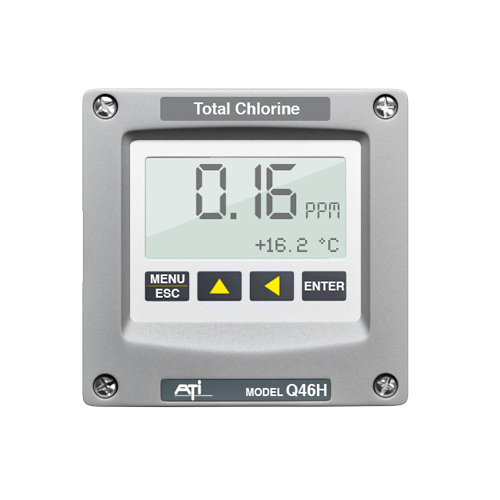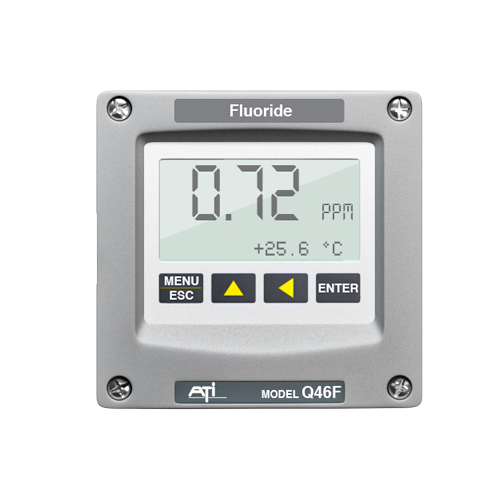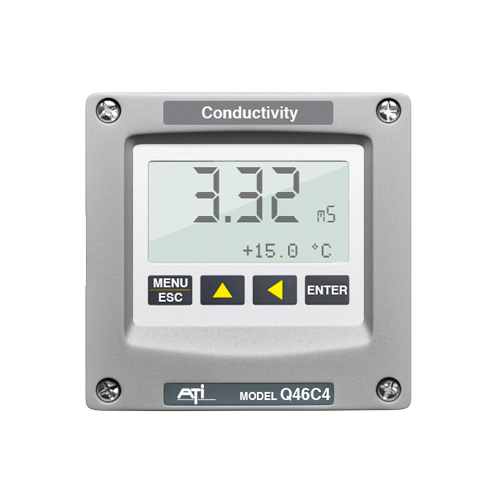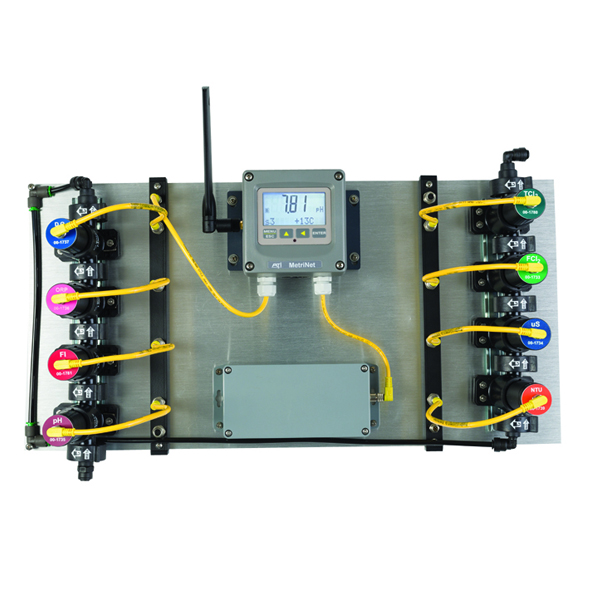Description
Description
Q46H/79S Total Chlorine Air Stripping Monitor uses iodometric chemistry, but with a unique sensing technique for measuring released iodine. The system takes the reacted sample containing iodine and uses an air-stripping system to remove molecular iodine from solution.
Wastewater disinfection helps to ensure that receiving streams are safe for recreational use and cooling water chlorination reduces biofouling that can degrade heat transfer efficiency. This wide use of chlorination for disinfection purposes results in the need for a reliable “residual chlorine” analyzer that can operate in a wide variety of applications.
Residual chlorine is found in many chemical forms in water systems. Residuals in clean water are often predominantly free chlorine while wastewater and cooling water can contain mixtures of free chlorine, combined chlorine and organochlorine species. Measurement of residual chlorine in applications where only free chlorine (potable water) or only combined chlorine (chloraminated water) exist can often be monitored with direct sensor measurement. However, applications where a variety of chlorine forms can exist (wastewater effluent and some cooling water) require a more complicated measurement method. These application generally require a “Total Chlorine” measurement and involve chemically converting all chlorine species into a single chemical form. This is normally done by reacting the sample with pH 4 buffer and potassium iodide, where the various chlorine compounds convert iodine ion into molecular iodine.
Many on-line monitors for total chlorine use this iodometric method, often measuring the current between two exposed electrodes to determine iodine concentration. ATI’s Model Q46H/79S uses this same standard iodometric chemistry, but with a unique sensing technique for measuring the released iodine. The system takes the reacted sample containing iodine and uses an air-stripping system to remove molecular iodine from solution. The gas-phase iodine from the water sample is channeled through a conditioning module and then directly to an iodine gas sensor. The result is that the iodine measurement is made without any contact between the water sample and the sensor. Contaminants in the sample that cause fouling and contamination of standard electrodes do not affect the Q46 system, providing greater optional reliability.
The Q46H/79S Total Chlorine Monitor employs ATI’s Auto-Chem chemistry module to provide chemical treatment of the sample, air stripping of the released iodine, gas sample conditioning and iodine gas measurement. In operation a mall amount of sample is pumped from an overflow assembly into the chemistry systems and mixed with pH 4 buffer and potassium iodide (K) solution. At pH, chlorine compounds in solution react as follows (equation shown for one chlorine compound only)
HOCl + 2Kl + H+ = 2KCl + I2 + H2O
The treated sample flows into an air-stripping chamber where a controlled amount of air removes the iodine from the water sample. The air coming from the top of the stripping chamber is directed to a gas conditioning module which removes any excess water and then to a flowcell containing the iodine gas sensor. The iodine gas sensor is an amperometric membraned sensor that generates current in proportion to the amount of iodine in the gas stream. Since the gas sensor is only in contact with clean air containing iodine, sensor fouling due to contaminants in the sample if eliminated.
ATI is now a Badger Meter brand.








